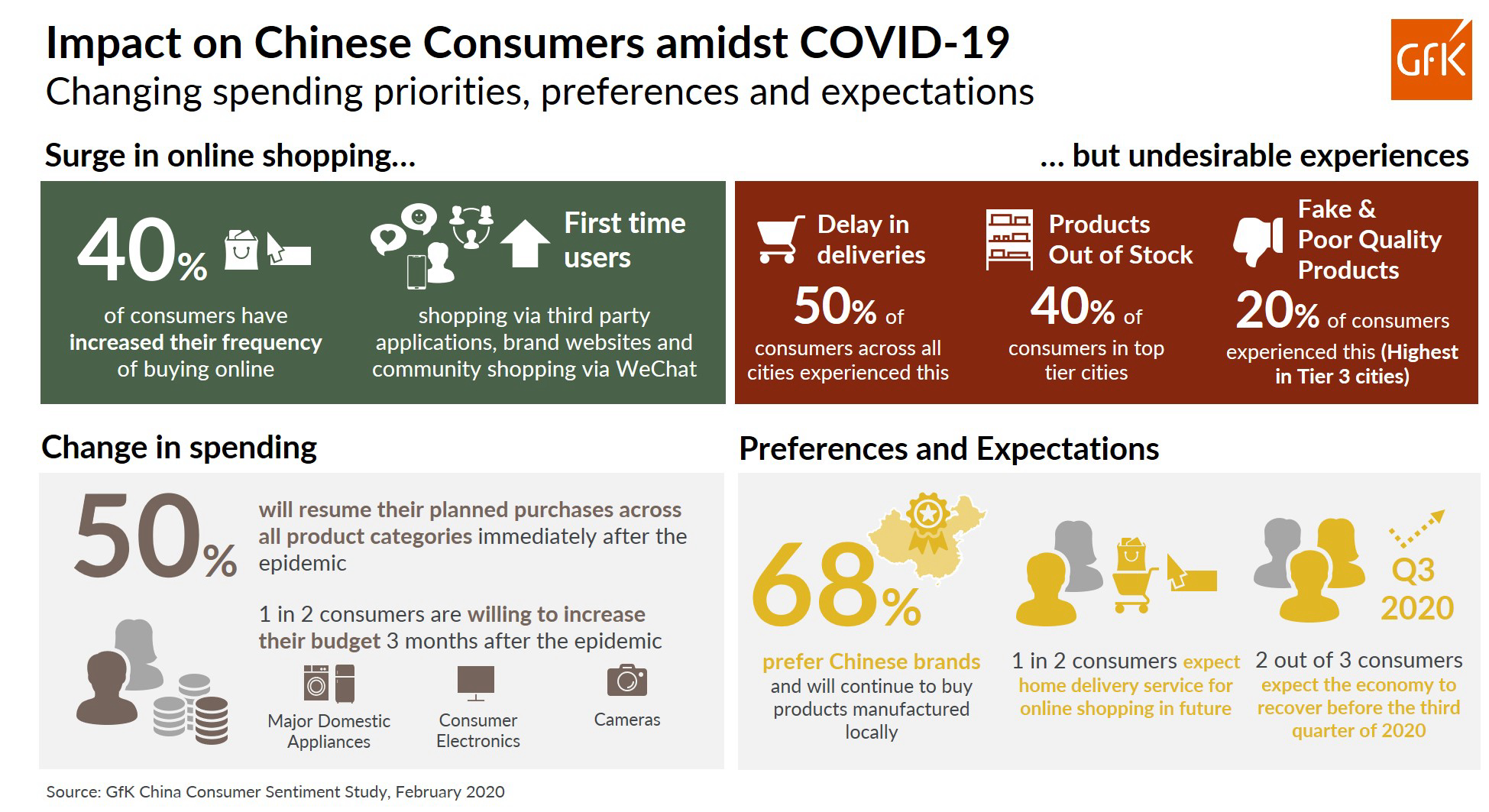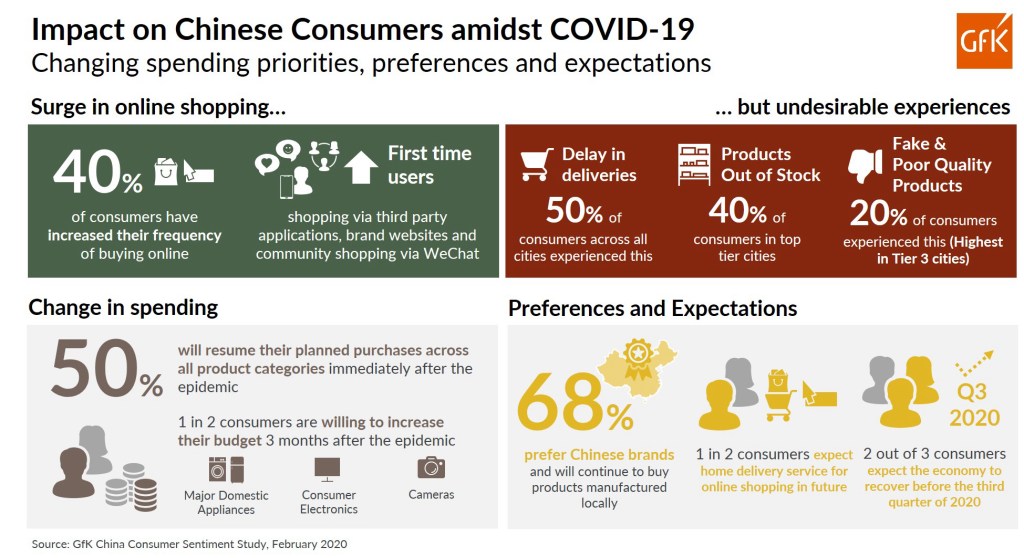With the COVID-19 outbreak keeping Chinese consumers confined to their homes, consumers in lower-tier (Tier 3 – 5) cities have also begun to shop online, with twice the number of first-time users compared to those living in upper-tier cities.
According to GfK China Consumer Sentiment Study February 2020, over 40% of consumers have increased their frequency of buying online, contributing to a surge in online shopping and home deliveries. More consumers are also shopping for the first time across platforms such as third-party applications, brand websites and community shopping via WeChat.
Challenges in online shopping and home deliveries amidst COVID-19 outbreak
Although local supermarkets and food delivery apps have enhanced their delivery services to cater to consumers during this difficult period, consumers have been facing key operational and logistical challenges including delay in deliveries, items being out of stock and poor-quality products.
Across all city tiers, more than 50% of consumers experienced a significant delay in home deliveries, with cities in Tier 1 seeing the most delays. Almost 40% of consumers in the top tier cities encountered products being out of stock while some others came across poor quality and fake products, of which almost 20% was seen in Tier 3 cities and below (the highest number of such instances across all city tiers).
Consumers’ intention to purchase post-outbreak
Although consumers surveyed had intentions to purchase consumer electronics, major domestic appliances and smartphones in 1H 2020, they are now postponing these planned purchases to save money during this trying period and prefer buying air treatment and personal care products to protect their health and well-being.
However, as 67% of consumers living across all China city tiers expect the economy to recover before the third quarter of 2020, 50% of consumers intend to resume their planned purchases across all product categories immediately after the epidemic. 1 in 2 consumers are willing to increase their budget to buy technical consumer goods three months after the epidemic, of which 43% plan to spend on major domestic appliances, 36% on consumer electronics and 33% on camera/video.
Consumers’ preference and expectations on online shopping post-epidemic
Having experienced the convenience of online shopping, more consumers are planning to buy technical consumer goods online even after the epidemic. In terms of preferred online channels, consumers picked major e-commerce platforms as their top choice across all product categories, followed by supermarket/store apps. As for future online purchases, 1 in 2 consumers expect home delivery service while 40% of those surveyed, mainly the younger and more affluent consumers expect products to be in packages made with environmentally friendly materials.
Consumer spending and brand choices post-outbreak
Looking ahead, after the epidemic, approximately 60% of consumers with high incomes plan to spend more to reward themselves while 70% of consumers in the low to middle income groups intend to save money by reducing overall expenses and only spending on essential items. Of the consumers surveyed, 68% indicated they prefer Chinese brands over foreign brands and will continue buying products that are locally manufactured to boost China’s economy following the outbreak. This sentiment could be due to Chinese brands continuously improving design and offering reliability and wallet-friendly prices.
“While China is already at the forefront of e-commerce and retail innovation, the current situation would further accelerate digital commerce adoption among consumers and will have a long-term impact on the consumer purchase behaviour. Chinese consumers are likely to adopt more options to consume content and purchase products and services online, including e-learning, online healthcare consulting or buying products through social commerce and third-party apps. Therefore, brands need to also explore newer commerce platforms, payment methods, delivery options and loyalty programs to connect with consumers across all city tiers and create a seamless shopping experience for them,” said Vishal Bali, Managing Director, GfK China and India.




